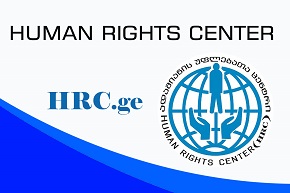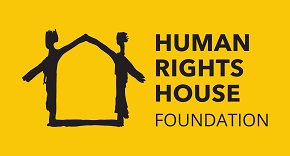US State Report on Trafficking in Persons in Georgia
Released by the Office to Monitor and Combat Trafficking in Persons, the US Department of State
June 5, 2006

GEORGIA (TIER 2)
Georgia is a source and transit country for women, children, and men trafficked for the purposes of sexual exploitation and forced labor. Many Georgian victims are trafficked to Turkey, mostly attributed to the lack of a visa regime between the two countries. Victims from Ukraine, Moldova, Russia, and other former Soviet states are trafficked through Georgia to Turkey, the U.A.E., Greece, and Western Europe.
According to IOM, at least 500 Georgian women are trafficked abroad every year. Reports of internal trafficking for both sexual exploitation and forced labor continued. Victims are reportedly trafficked for the purpose of forced labor in the breakaway region of Abkhazia and traffickers may be using South Ossetia to traffic victims from Russia into Georgia and onwards. The Government of Georgia does not fully comply with the minimum standards for the elimination of trafficking; however, it is making significant efforts to do so. Notably, the government increased both arrests and investigations of traffickers in 2005. The President appointed the Prosecutor General's Office, a senior government Ministry, to lead its anti-trafficking efforts, which showed increased momentum late in the reporting period. However, the government failed to vigorously prosecute traffickers, and it did not achieve tangible progress in the protection and rehabilitation of trafficking victims. The government should implement a national victim referral, increase its convictions and sentences, ensure adequate shelter for trafficking victims, and establish witness protection so victims feel secure to testify against their exploiters. A public awareness campaign is needed to encourage victims to seek care and help reduce the stigma of trafficking victims in Georgia.
Prosecution
The Government of Georgia’s law enforcement response to trafficking was mixed in 2005. The government increased its arrests and investigations but failed to show progress in convicting and sentencing traffickers. The Georgian Government investigated 27 cases and prosecuted nine cases of trafficking during the reporting period. Three of these cases resulted in convictions of nine traffickers. Only two are serving sentences of five years. Four traffickers were released with time served, and the remaining three received conditional or suspended sentences. The anti-trafficking unit continued to operate throughout Georgia with 29 dedicated officers in Tbilisi and 12 regions, with one unit stationed at the airport 24 hours a day. NGOs and international organizations reported good collaboration with the unit. The government made progress on its draft anti-trafficking law, bringing in international organizations for guidance on best practices. This legislation passed its second reading in the Parliament early in 2006. While IOM continued to collaborate with Georgia's border police to distribute anti-trafficking information pamphlets at the border with Turkey, only a few hundred had been distributed as of March 2006. Reports of trafficking-related corruption and direct law nforcement involvement in trafficking continued. One case from February 2005 involving an official for trafficking-related complicity resulted in a plea bargain and led to the release of the individual with time already served. The government continued its investigation of another passport official for facilitating trafficking in 2004, transferring the case to the General Prosecutor in March 2006.
Protection
The Government of Georgia failed to provide adequate protection and assistance to trafficking victims in 2005. It did not establish a shelter for victims of trafficking; most victims return to Georgia without receiving sufficient rehabilitation and assistance. This lack of victim protection translated into few to no victims willing to serve as witnesses in police investigations or court prosecutions of traffickers. Although law enforcement and border officials do not formally screen for potential trafficking victims, the government identified a slightly greater number of trafficking victims in 2005, 18, up from 15 identified during the previous year. The government failed to formalize a mechanism for referring victims to NGOs for care, though in 2005, police in Adjara signed a memorandum of understanding with a local NGO to implement a pilot project for identification and referral. Border police, with the assistance of an NGO, established a waiting room on the border with Turkey to facilitate better identification of potential victims.
Prevention
The government continued to rely on NGOs and international organizations to conduct anti-trafficking prevention programs over the last year. In December 2005, the government assigned lead anti-trafficking responsibilities to the Prosecutor General’s Office, and appointed the Prosecutor General to chair its anti-trafficking Inter-agency Commission. The Commission subsequently improved the transparency of its enforcement efforts by collecting and disseminating up-to-date statistics on a bi-monthly basis, in accordance with its action plan. The Government’s National Action Plan, adopted in December 2004, however, remains largely unimplemented. Although several ministries reportedly redirected funds from their budgets for anti-trafficking efforts last year, the government has yet to dedicate funding to implement the plan. http://www.state.gov/g/tip/rls/tiprpt/2006/65988.htm



